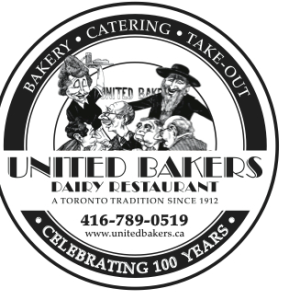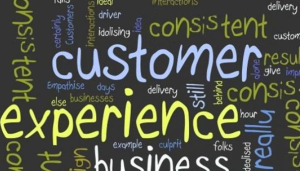Canadians and Americans love their fast food. In an industry that continues to evolve, there are many factors impacting the growth of quick service restaurants: including the economic recession, the rising food costs, and the shift to more healthy alternatives. Lower discretionary spending and the shift to healthy foods continue to challenge the consumer mindshare in an attempt to change behaviour. Not only do restaurants today face a volatility in consumer demand, they are also witnessing the rise of a totally different breed of fast food that is contributing to an already overwhelming market saturation.
And while these trends will continue to challenge business, fundamentally QSRs must develop sustainable ways to combat these evolutions, but more importantly ensure they have a loyal base of customers that they can count on every step of the way.
“We are going back to the Mom and Pop Store… where they knew your name”
Gary Vee, entrepreneur and author of the Thank You Economy, provided an amazing perspective about today’s world and shifts in how people consume information in this increasingly digital space, and how this impacts their decisions:
All marketing is going to get back to the way it used to be in the Butcher Shop or Mom and Pop store where they knew your name, your kids name and your dogs name. That’s the way humans like it……Remember the small-town rules? The Mom and Pop shops knew context on the end customer. And they used that context to do business with them.
In a $160 billion market with over 200,000 restaurant locations in the US alone, it will become increasingly difficult to acquire new customers without cannibalizing the market overall https://rusbank.net/offers/microloans/zaym_na_kartu.
The end game is retention. It’s the customers that love you that will define your success.
United Bakers of Toronto is Connected to its Customers
 One restaurant that I would label an original Mom and Pop shop continues to drive home this mentality today. Located in North Toronto and in operation since 1912, United Bakers sold their breads and dairy meals, prepared on the premises, and soon it became a popular place to stop by.
One restaurant that I would label an original Mom and Pop shop continues to drive home this mentality today. Located in North Toronto and in operation since 1912, United Bakers sold their breads and dairy meals, prepared on the premises, and soon it became a popular place to stop by.
Their patrons were all immigrants new to Canada, including those just arriving and those who had time to establish themselves. At this point in history there was an influx of immigrants from Central and Eastern Europe arriving in Canada; the Jewish community was expanding.
Through to World War II, United Bakers prospered and it “became the hub of political and social activity”, attracting everyone from factory workers, businessmen, artists, writers, poets and people from all walks of life. According to owner, Philip Ladovsky,
Payment was based on the honour system: you came to the cash register, recited what you’d eaten, and were charged accordingly. Not a few times a patron who was short on funds would eat for free…The Ladovskys turned no one away trusted that those they quietly assisted would one day provide for themselves, and for others too.
The strong foundation upon which these traditions were built continues to this day. Philip conveys his philosophy on their success:
Customers are people who have decided to spend their money at your business…..We are here because there is no substitute for the presence and personal participation of an owner…We consider it our privilege — and our responsibility– to be here to set the tone. That’s how we get to know our customers … one by one.
However, while service has an enormous impact on keeping your customers intact, it’s only part of the story.
Loyal Customers Expect a Company to….
- Be Present. Listen. As an owner, be aware of everything that goes on – from the service, to the food quality, to customer reactions. The wealth of information you can draw by just being present will go a long way to changing the things that need to improve with the customer in mind. At United Bakers, the Ladovskys were keenly aware of who their customers were, what they usually ordered, where they regularly sat, and most importantly, what was going on in their lives. Being present means being genuinely interested and aware of your customers’ needs.
- Create an Amazing Experience.
 The first experience is usually a home run or a deal breaker for many customers. A friendly employee, a clean premises, efficient staff, and quality food all contribute to the decision to come back. There is one fast food chain I repeatedly patronize. There are 3 other locations for this franchise within less than 5km of each other, yet I continue to go to my favourite. The reason: the one waitress who knows my name and the name of my kids. She knows our favourite booth. She consistently serves my kids “free” fries as we wait for our order. Despite her busy schedule she always takes the time to initiate a conversation with us.
The first experience is usually a home run or a deal breaker for many customers. A friendly employee, a clean premises, efficient staff, and quality food all contribute to the decision to come back. There is one fast food chain I repeatedly patronize. There are 3 other locations for this franchise within less than 5km of each other, yet I continue to go to my favourite. The reason: the one waitress who knows my name and the name of my kids. She knows our favourite booth. She consistently serves my kids “free” fries as we wait for our order. Despite her busy schedule she always takes the time to initiate a conversation with us.
- Make it Easy. Customers are inherently good. They are not out to try to deliberately scam a free meal. When customers complain, the quick response should be: How can I provide quick resolution to the customer’s satisfaction? The customer is ALWAYS right even when the customer is wrong. By looking at the broader picture, owners must assess whether challenging a customer will have more detrimental effects than simply resolving the issue quickly and addressing the error. These days the word-of-mouth effects of negative comments tend to proliferate farther and faster than the positive ones.
- Know their Customers. Capturing customer-level transactions at the franchise level can be onerous. What’s more, doing something about that information needs considerable attention. Making it easy for your customers means remembering their purchase history and understanding their value to you as a business based on customer recency, frequency and revenue they add to your business. We at Virtual Next also see this as an important factor in how local franchise compete for store traffic. We believe our solutions that provide data on the customer value will be integral to providing only what’s relevant to your most loyal.
- Reward their Customers.
 There are many loyalty programs that seek to drive customer consideration. In an increasingly mobile market, there are thousands of loyalty applications in this fragmented app market competing for the customer’s attention. Again, it’s about making it easy for the customer to keep you top of mind. Loyalty is derived from the customer relationship with the company, and the strength of that relationship requires considerable effort from the company itself. Virtual Next believes the future of loyalty means the restaurant owner will be able to offer richer customer experiences and better targeted loyalty and promotion programs based on the customers’ purchasing habits.
There are many loyalty programs that seek to drive customer consideration. In an increasingly mobile market, there are thousands of loyalty applications in this fragmented app market competing for the customer’s attention. Again, it’s about making it easy for the customer to keep you top of mind. Loyalty is derived from the customer relationship with the company, and the strength of that relationship requires considerable effort from the company itself. Virtual Next believes the future of loyalty means the restaurant owner will be able to offer richer customer experiences and better targeted loyalty and promotion programs based on the customers’ purchasing habits.
In the profound words of Gary Vee:
Caring for the end user who is buying our products… is ALWAYS the right thing [to do]. The ones who WIN feel it, execute and they they tell others how they did it….The world is changing. The eyeballs and ears of our customers are going in different places. If you’re not there. You’re going to lose.
How do you keep your customers loyal? Your suggestions are welcome.
